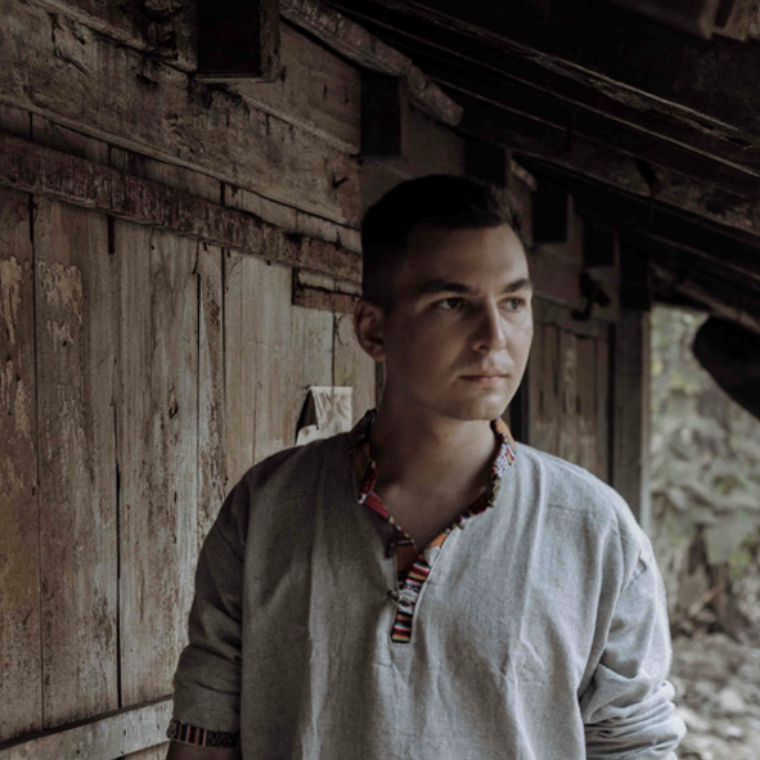The historic Ooty toy train has delighted travelers for more than 125 years as it winds through the stunning Nilgiri Mountains. This engineering marvel stands as India’s only rack railway system. The train travels 46 kilometers, passes through 16 tunnels and crosses 250 bridges to create one of the country’s most exceptional rail experiences.
The train’s journey from Mettupalayam to Ooty is a scenic adventure that climbs 1,877 meters through misty hills and tea plantations. Passengers can enjoy panoramic views along Asia’s steepest railway track, which features 208 curves. The uphill ride takes about 5 hours, giving everyone plenty of time to take in the region’s natural splendor.
This UNESCO World Heritage site still captivates visitors with its vintage steam locomotives. Some of these engines have served faithfully for 80 years. This detailed piece covers everything you need to know about booking tickets, the train’s unique engineering, and ways to make the most of your mountain railway adventure.
The Historic Journey of Nilgiri Mountain Railway
British planners in 1854 dreamed of building a mountain railway from Mettupalayam to connect the Nilgiri Hills. The project proved too complex, and many proposals failed before construction could start.
From Vision to Reality: The Construction Story
Swiss engineer Niklaus Riggenbach, who invented the Rigi system of mountain railways, stepped forward to build the line in 1876. The Duke of Buckingham came up with a different plan in 1877 that combined a regular railway with an inclined ropeway. Money problems and safety issues stopped both these plans.
Major Morant of the Royal Engineers changed everything by asking Riggenbach to survey the Nilgiris in 1880. This led them to create the Nilgiri Railway Company with Rs. 2.5 million in capital. Lord Wenlock, the Governor of Madras, launched the construction on August 3, 1891.
UNESCO World Heritage Status and Recognition
The railway’s remarkable engineering earned UNESCO World Heritage status in July 2005. This status celebrates the railway’s cultural and technical value as an outstanding example of hill passenger railway design. The heritage recognition became a vital shield in the 1960s when the line almost faced dismantling due to money troubles.
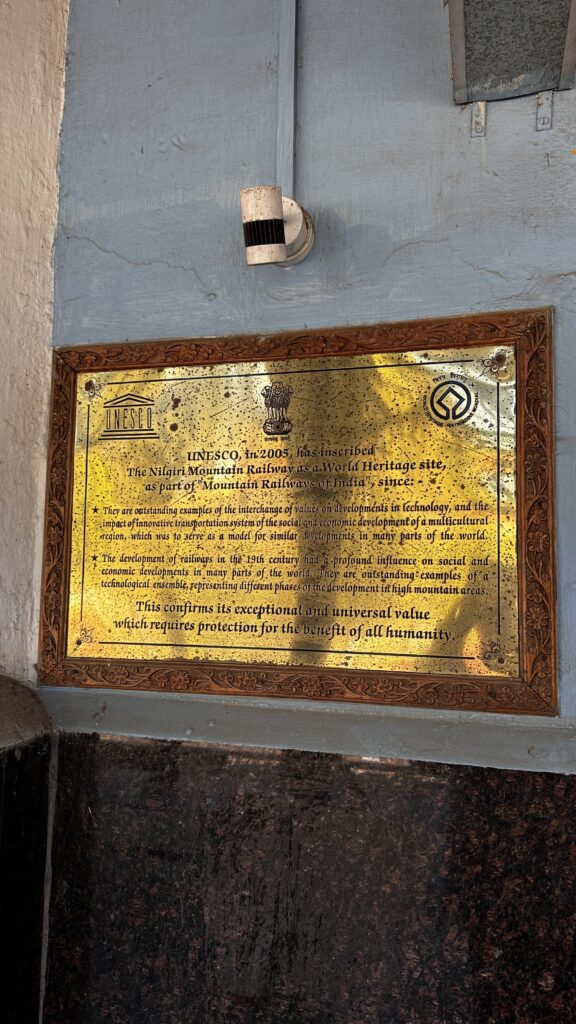
Rise Through the Decades
The railway grew in planned stages. The first stretch from Mettupalayam to Coonoor opened in June 1899, covering sixteen and three-quarter miles of meter gage track. The line reached Fernhill by September 1908, and finally connected to Udagamandalam on October 15, 1908, costing ₹2,440,000.
Technical improvements made the railway better. Four Double Fairlie locomotives joined the fleet in 1907. The Golden Rock Workshop in Trichy now makes these specialized X-Class steam locomotives. The line still has its original infrastructure, stations, semaphore signal systems, and rolling stock, making it one of the rare working heritage systems.
Complete Guide to Ooty Toy Train Booking
Getting a seat on the Nilgiri Mountain Railway needs good planning and quick action. People love this railway so much that tickets get sold out months ahead.
Online Booking Process
How to Book Tickets Through IRCTC
Note: Online booking is available only for Indian residents.
- Create or log into your IRCTC account
- Navigate to the “Plan My Journey” section
- Enter your departure and arrival stations
- Select your travel date and ticket type
- Choose from available trains and class options
- Fill in passenger details
- Complete the payment process
Alternative Booking Methods
If you’re not an Indian resident or prefer offline booking, you can purchase tickets at station counters. However, please note that you’ll be limited to four tickets per person when booking at the counter.
Tips for Smooth Booking
- Keep your IRCTC account details handy
- Check train schedules and availability in advance
- Have valid ID proof ready for all passengers
- Be prepared with multiple payment options
- Book early for better seat availability, especially during peak seasons
Remember to check the IRCTC website for any updates on booking policies or procedures, as they may change from time to time.
Peak Season and Weather Tips for Travelers
When planning your trip, consider these key points:
- Peak Tourist Seasons:
- April to June: Highest influx of visitors
- December and January: Another busy period
- Ideal Travel Time:
- September to November: Perfect weather conditions
- Clear skies
- Pleasant temperatures
- September to November: Perfect weather conditions
- Booking Window:
- Opens 120 days before the travel date
Remember that during peak seasons, accommodations and attractions may be more crowded. The September to November period offers a great balance of good weather and potentially fewer tourists, making it an excellent time for travel.
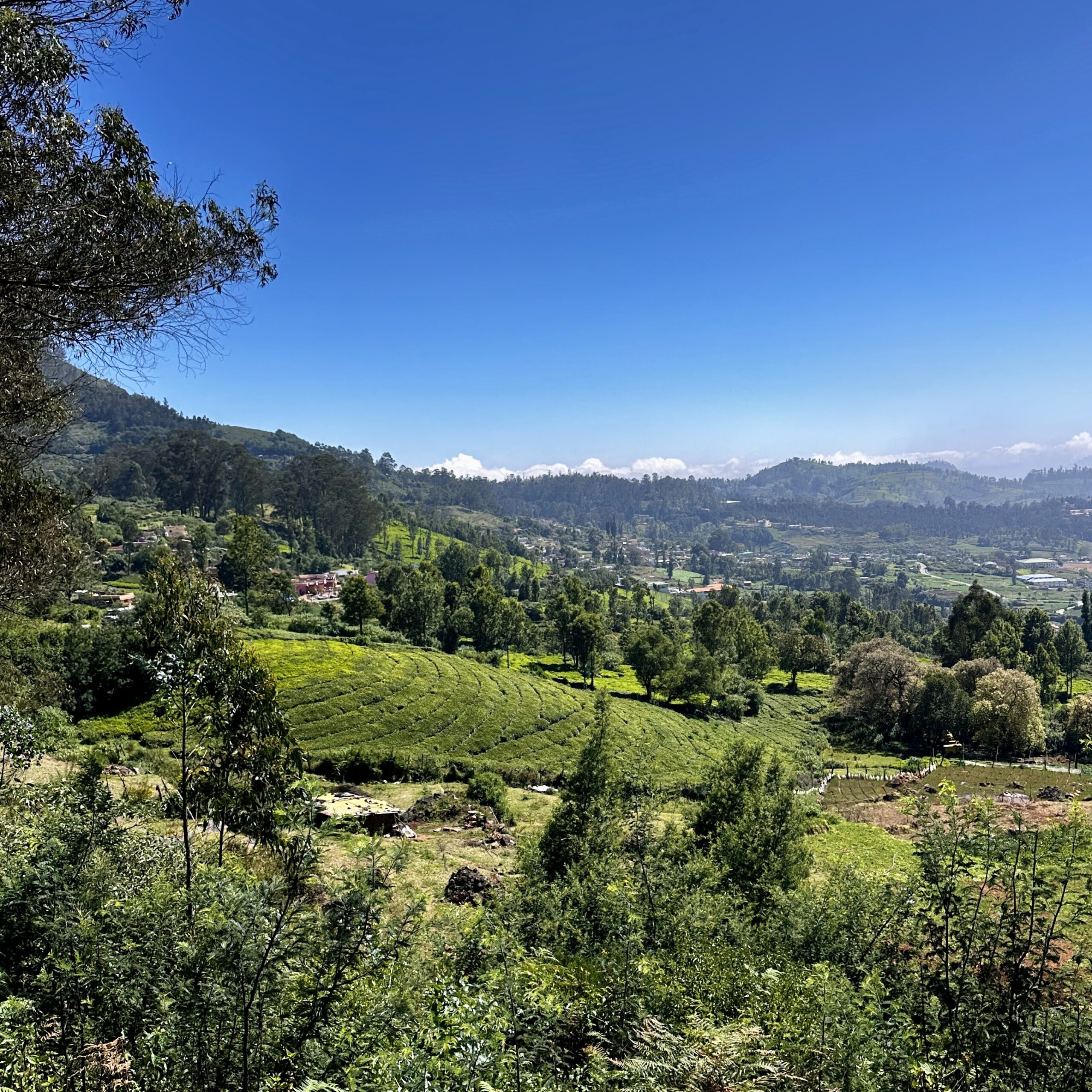
Class Types and Seat Selection Strategy
The Nilgiri Mountain Railway has three different seating options:
First Class gives you an intimate experience with just 16 seats. These tickets cost ₹290 per person and come with cushioned seating and exclusivity. Second Class fits 214 passengers and costs ₹80 per person. Both classes let you enjoy similar views, but differ in seat comfort.
Smart seat selection will enhance your experience. Pick left-side seats when going from Coonoor to Ooty, and right-side seats on your way back. This way, you’ll get the best views of Nilgiri’s beautiful landscapes.
Note that unreserved tickets cost ₹15 but get heavily crowded during peak seasons. So, booking reserved seats ahead of time remains your best choice to enjoy this historic rail ride.
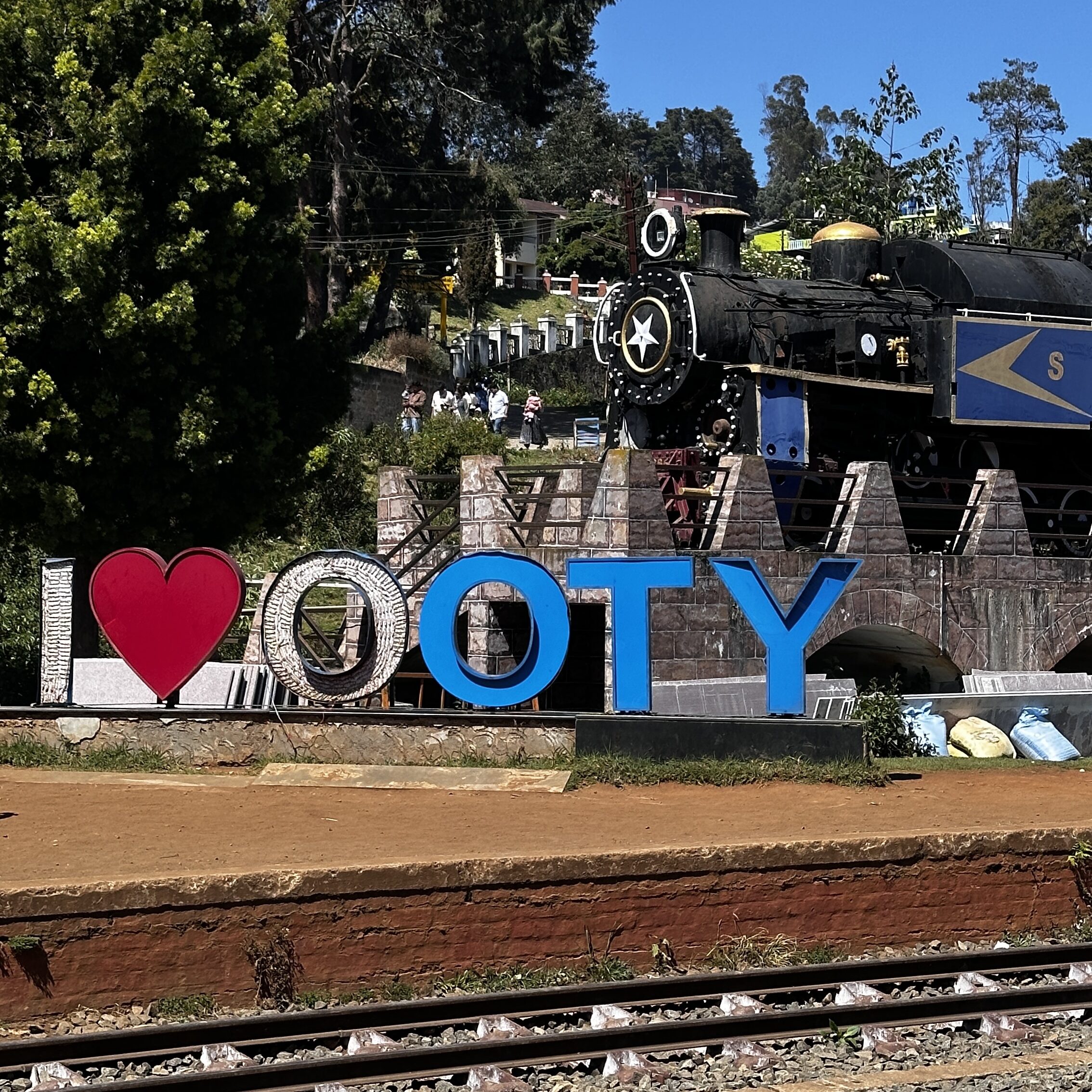
Routes and Timings of the Mountain Railway
The Nilgiri Mountain Railway runs daily trains along a scenic 46-kilometer route that gives travelers several options to plan their trip.
Mettupalayam to Ooty Train Schedule
The uphill train leaves Mettupalayam at 7:10 AM and reaches Ooty by 11:55 AM. Passengers spend about 4 hours and 45 minutes on this morning climb. The return trip starts from Ooty at 2:00 PM and pulls into Mettupalayam by 5:30 PM.
A special summer service runs during April and May from Mettupalayam at 9:30 AM. This extra train helps handle the rush of tourists during peak season.
Ooty to Coonoor Toy Train Options
The Nilgiri Mountain Railway, affectionately known as the Toy Train, offers a charming journey between Ooty and Coonoor. This UNESCO World Heritage site provides travelers with a picturesque ride through the stunning Nilgiri Hills. Here are the main options for your Toy Train experience:
- Full Route: You can take the complete journey from Mettupalayam to Ooty, which includes the Coonoor stop. This option gives you the full experience of the mountain railway.
- Ooty to Coonoor: A popular choice is the shorter route directly from Ooty to Coonoor. This scenic trip takes about an hour and offers breathtaking views of the tea plantations and misty mountains.
- Coonoor to Ooty: You can also opt for the reverse route, starting your journey in Coonoor and ending in Ooty.Trains 56139, 56142, 56137, and 56140 operate between Ooty and Coonoor. These trains are part of the scenic Nilgiri Mountain Railway, offering a picturesque journey through the hills.
- Round Trip: Some tourists choose to do a round trip on the same day, enjoying the views in both directions.
Engineering Marvel of the Mountains
The Nilgiri Mountain Railway’s scenic beauty hides a complex engineering system that has proven itself over time. This railway’s unique design helps it climb some of Asia’s steepest slopes, which shows innovative railway engineering at its best.
Understanding the Rack and Pinion System
The remarkable rack and pinion mechanism forms this mountain railway’s core. We designed this system to handle steep gradients up to 1 in 12.5 (8.33%), with two racks placed close together between the rails. These racks work like a ladder – their teeth connect with the locomotive’s pinion gears to keep trains from slipping on steep climbs.
This rack and pinion system works through a clever process. Each coach has its own cogs that fit into the rack rails and give extra grip and safety. The system makes the train run smoothly even on the steepest parts where regular trains would lose their grip.
Steam Locomotives and Their Maintenance
The X-Class steam locomotives that power this heritage line showcase exceptional engineering. Swiss Locomotive and Machine Works of Winterthur built these machines with a special four-cylinder compound system. The locomotives split their pulling power between adhesion at 57% and rack drive at 43%.
These historic engines need special care to keep running:
- The Coonoor loco shed services them twice daily
- They use about 500 liters of water for each uphill kilometer
- Each engine carries 850 liters of diesel and 2,250 liters of furnace oil
Bridges, Tunnels, and Track Design
The railway stretches 46 kilometers with masterful engineering throughout. The track features:
- 50-pound rails cushioned by stone ballast from 75mm to 150mm thick
- 250 bridges in total, including 32 major ones
- 16 tunnels, some of which open right onto bridges over deep valleys
The track’s average slope is 1 in 24.5, and its sharpest turn measures 17.5 degrees. This careful design lets steam locomotives climb steadily at 15 kilometers per hour and run at 30 kilometers per hour on flat sections.
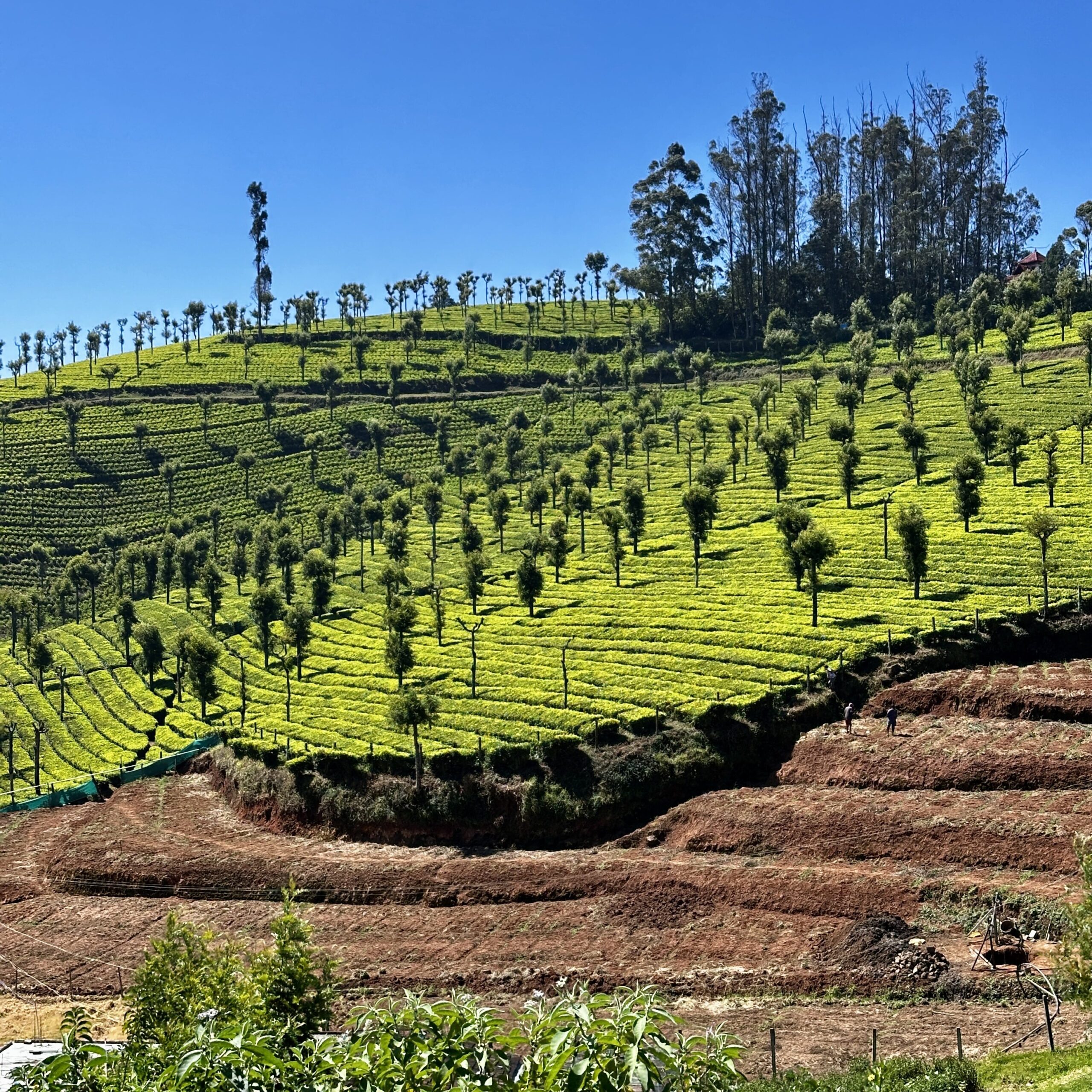
Essential Tips for the Perfect Journey
Getting ready for your trip on the Nilgiri Mountain Railway needs good planning to make it comfortable and fun. Let me help you pack the right stuff and get those perfect photos with this complete guide.
What to Pack and Wear
Mountain weather can surprise you – it moves from cold mornings to warm afternoons. Long pants and long-sleeve shirts will protect you from mosquitoes that show up before the train starts moving. We found that layered clothes work best as temperatures change during the trip.
Pack these must-haves to stay comfortable:
- Light jacket or warm layer to beat the morning cold
- Water bottle and light snacks
- Camera with full batteries
- Small backpack (you won’t have much space)
- Simple first-aid supplies
Photography Tips and Best Spots
The train’s left side gives you amazing views on the way up. In spite of that, you’ll find great photo spots on both sides throughout the trip. The train stops at scenic points where you can snap beautiful shots of waterfalls, rivers, and tea plantations.
The most picture-perfect spots come up as you pass through 208 curves and 16 tunnels. The morning light right after departure creates magic moments to capture the steam locomotive. Tea plantations along the route are a great way to get landscape shots.
Food and Comfort Recommendations
The station’s canteen dishes out authentic South Indian breakfast – idlis, vadas, and dosas with Tamil Nadu special sambar. You’ll find several places to eat near the stations that match different tastes:
Restaurant Guide in Ooty
Here are some excellent dining options close to the station:
- Kailash Parbat Restaurant – Located just 322 meters from the station, this restaurant is renowned for its excellent biryani and other Indian delicacies.
- Adyar Ananda Bhavan – This popular chain serves high-quality South Indian food, offering a wide variety of vegetarian options.
- Le Cafe – Situated approximately 1,126 meters away, this cafe is perfect if you’re craving European flavors. They’re known for their great pizza and delicious ramen bowls.
Each of these restaurants offers a unique dining experience, catering to different tastes and preferences. Whether you’re in the mood for local Indian cuisine or international flavors, you’ll find a suitable option within walking distance of the station.
Head to your seat as soon as you board and get ready for the long ride. The trip takes 4-5 hours. The benches are quite small whatever your seat class, so pack light and organize your stuff well.
You should reach the station early. This lets you avoid rushing and explore the station’s historic feel. Summer months give you pleasant weather unless you’re traveling in monsoon season. The area looks stunning after rains – mountain rivers rush through gorges and waterfalls flow freely.
Note that you can’t litter on the train or around it. This trip is a chance to see the Nilgiris’ natural beauty, and keeping this environment clean is vital for future generations.
Conclusion
The Nilgiri Mountain Railway is proof of human engineering excellence and natural beauty. This historic trip gives you more than just a ride – it’s a chance to explore India’s rich railway heritage while taking in the stunning Nilgiri landscapes.
Good planning will make your experience better with this UNESCO World Heritage marvel. Getting your tickets ahead of time, especially in peak seasons, will give a smooth trip through the mountains. The rack and pinion system paired with vintage steam locomotives still amazes visitors as it climbs some of Asia’s steepest slopes.
The 46-kilometer stretch from Mettupalayam to Ooty is definitely one of India’s most beautiful train routes. You can admire misty hills, capture photos of many tunnels and bridges, or just enjoy the steady climb past tea plantations. Every moment adds up to create an unforgettable mountain adventure.
This historic toy train shows that the scenic route often creates the best memories. Just remember to pack right, show up early, and keep your camera ready – this amazing railway trip through the Nilgiris will stay with you forever.
